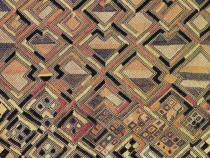
© HdKW Berlin
The word “detail” is derived from French and Latin, where it has implications of separating, dividing off, dismembering something into its constituent parts. A detail is, therefore, part of a whole. The analogy of textile structures may serve as a useful point of reference for an outline of Otto Steidle’s urban work. This is concerned less with individual objects than with the relationships that exist between city, neighbourhood, street block and building, and the structuring lines of circulation and access. All sections of a city are part of the overall urban fabric, just as a piece of cloth is essentially the same as the larger area from which it is cut. The city is both a whole and a series of details. For Otto Steidle, the continuity of the city implied working on a “built expression of a calculated social and ... spatial system”. At the level of the city, as at the level of the individual building, this has to do, above all, with the transitional zones between public and private realms. “A democratic society finds expression especially in those areas that are at the disposal of the public at large.



